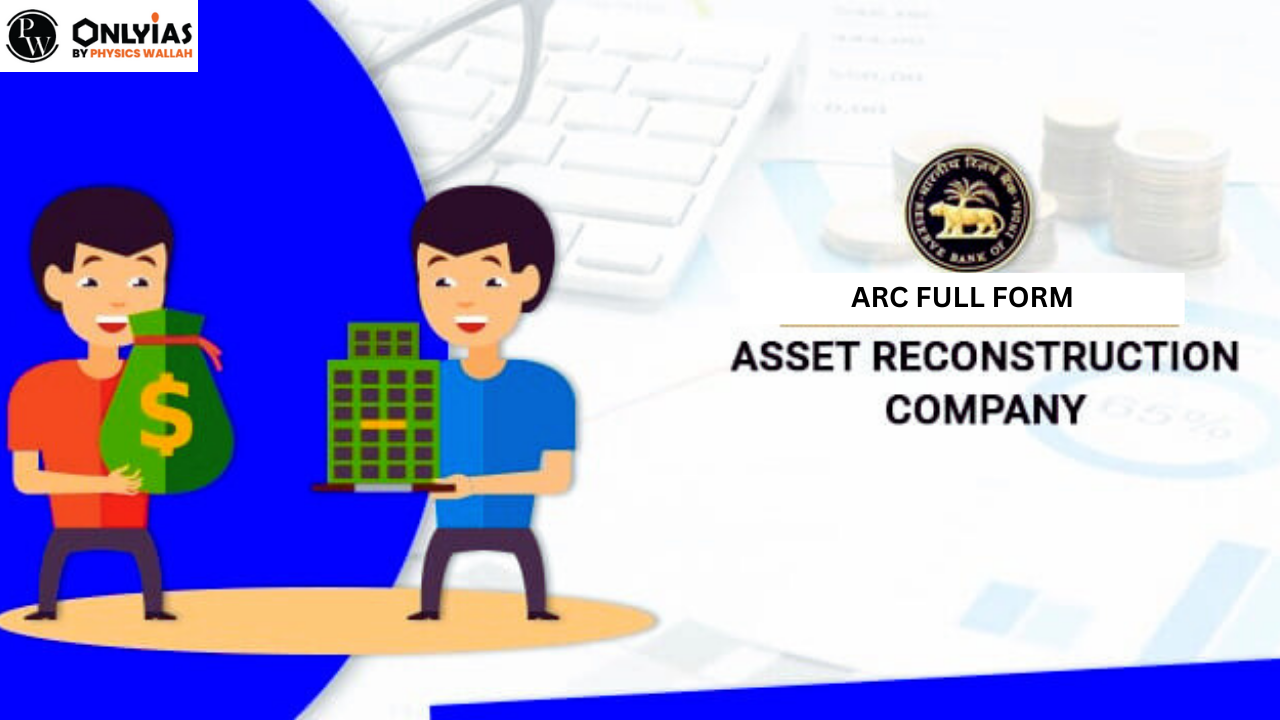The full form of ARC is Asset Reconstruction Company, its functions, and role in resolving distressed assets. Learn how ARCs work and contribute to the financial sector's stability.

Asset Reconstruction Company is a financial entity that specializes in the acquisition and resolution of Non-Performing Assets (NPAs) from banks and financial institutions. ARCs play a key role in the banking sector by assisting in the recovery and restructuring of stressed assets, thus freeing up resources for banks to focus on core lending activities. This guide will introduce the concept of Asset Reconstruction Company their role, and the regulatory framework that governs them, with a particular emphasis on Non-Performing Assets (NPAs) and RBI guidelines.
An Asset Reconstruction Company (ARC) is a type of financial institution that specializes in acquiring and managing distressed assets, typically loans or non-performing assets (NPAs) from banks and other financial institutions. When borrowers are unable to repay their loans, these loans become NPAs, and banks might decide to offload these troubled assets to ARCs.
ARCs play a crucial role in the financial system by helping banks clean up their balance sheets and recover some value from the troubled loans. Here’s how the process generally works:
“ARC” in the context of finance and banking often stands for “Asset Reconstruction Company.” An Asset Reconstruction Company (ARC) is a specialized financial institution that deals with the acquisition and resolution of non-performing assets (NPAs) or distressed assets from banks and financial institutions.
ARCs are typically established to help banks and financial institutions manage their bad loans and improve their financial health. These companies purchase NPAs from banks at a discounted price and then work to recover the value of these assets through various means, such as debt restructuring, asset sales, or other strategies.
The primary goal of ARCs is to facilitate the cleanup of banks’ balance sheets and to help them focus on their core banking activities. By transferring distressed assets to ARCs, banks can recover some value from these assets and allocate resources more efficiently.
| ARC Full Form | |
|---|---|
| Full Form | Asset Reconstruction Company |
| Year of Establishment | 2005 |
| Regulatory Authority | Reserve Bank of India (RBI) |
| Primary Objective | Acquire and resolve distressed assets |
Non-Performing Assets (NPAs) are loans or advances that have ceased to generate income for the lender. According to banking norms, a loan is classified as an NPA if the principal or interest remains overdue for more than 90 days.
The impact of NPAs on the banking sector can be severe:
ARCs acquire NPAs from banks and financial institutions, paying them a percentage of the loan’s book value. The acquired assets are managed through various mechanisms, such as:
By offloading NPAs to ARCs, banks can reduce their burden of distressed assets and focus on their primary operations.
Asset Reconstruction Companies (ARCs) in India were introduced as a result of the ongoing efforts to address the issue of Non-Performing Assets (NPAs) in the banking sector. NPAs are loans that are not being repaid as scheduled, leading to financial stress for banks and affecting their ability to lend. To tackle this problem, the concept of ARCs was introduced to help banks offload their distressed assets and focus on their core lending activities.
The establishment of ARCs in India can be traced back to the Securitization and Reconstruction of Financial Assets and Enforcement of Security Interest (SARFAESI) Act, which was enacted in 2002. The SARFAESI Act provided a legal framework for banks and financial institutions to take control of collateral in the event of default and to sell or transfer assets to ARCs.
The key steps in the evolution of ARCs in India are as follows:
Asset Reconstruction Companies (ARCs) have several important functions in the financial ecosystem, particularly in the management and resolution of distressed or non-performing assets (NPAs). Here are the key functions of an ARC:
Asset Reconstruction Companies (ARCs) employ various resolution strategies to maximize the recovery of distressed assets and non-performing loans (NPAs). These strategies are aimed at reviving businesses, recovering funds, and resolving the financial stress caused by these assets. Here are some common resolution strategies that ARCs can employ:
Asset Reconstruction Companies (ARCs) require funds to acquire distressed assets, manage them, and implement resolution strategies. These funds are obtained from various sources to facilitate their operations. Here are some common sources of funds for ARCs:
Asset Reconstruction Companies (ARCs) work as specialized financial institutions that play a crucial role in resolving non-performing assets (NPAs) or distressed assets in the banking sector. Here’s how ARCs typically work:
Asset Reconstruction Companies (ARCs) face several challenges in their operations due to the complex nature of resolving distressed assets and the dynamic financial environment. Some of the key challenges faced by ARCs include:
The Reserve Bank of India (RBI) is the apex authority responsible for regulating Asset Reconstruction Companies in India. It has issued comprehensive guidelines to ensure that ARCs operate transparently and effectively while safeguarding the interests of all stakeholders.
Ready to boost your UPSC 2025 preparation? Join PW’s UPSC online courses today!
| Related Links | |
|---|---|
| GATT Full Form | CRZ Full Form |
| TRAI Full Form | DPCO |
An ARC, or Asset Reconstruction Company, is a specialized financial institution that acquires and resolves distressed assets, primarily non-performing loans, from banks and financial institutions.
ARCs help banks offload non-performing assets, improve their balance sheets, and focus on core banking activities while working to recover maximum value from distressed assets.
Yes, ARCs play a role in economic stability by minimizing the impact of NPAs on financial institutions, enabling banks to lend more effectively, and aiding in the recovery of funds.
ARCs face challenges like accurate asset valuation, legal complexities, borrower cooperation, funding constraints, and economic factors.
ARCs contribute to the banking sector by reducing the burden of non-performing assets, improving bank health, and facilitating better lending practices.

<div class="new-fform">
</div>